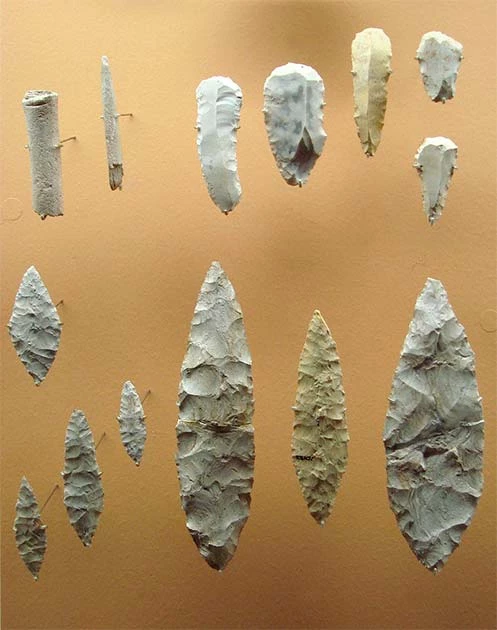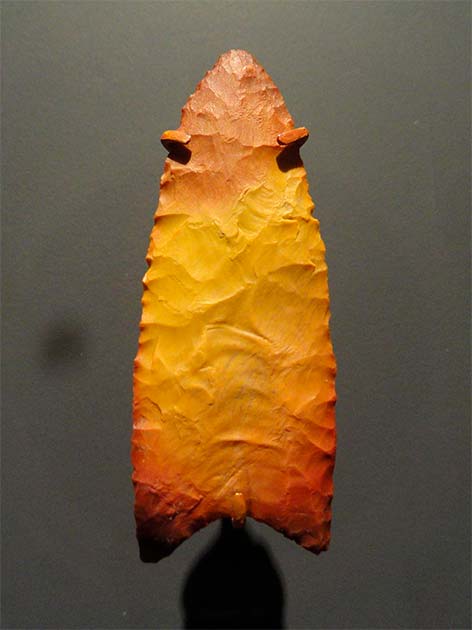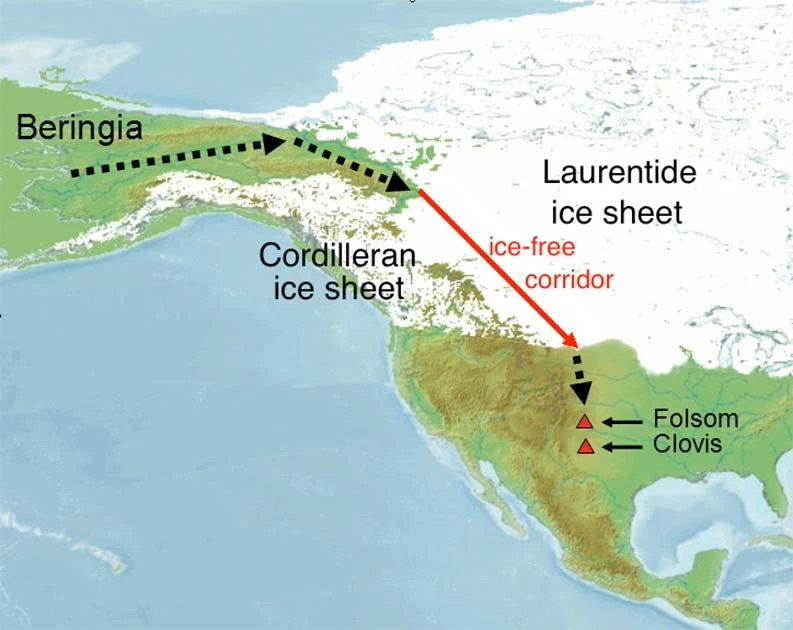Sounds crazy, doesn’t it? The idea that the ancient peoples of the Americas migrated not from the steppes of east Asia, but from prehistoric France, seems at best like a bad joke, and at worst like a radical misinterpretation of almost all available evidence.
However, there is a surprising amount of evidence which suggests what is known as the “Solutrean Hypothesis” might actually be a possibility. The claims that the Americas were first populated by settlers from Europe who traveled across pack ice to cross the Atlantic Ocean should not be dismissed so quickly.
It is a theory that massively contradicts the current academic thinking that people traveled from Asia across the Bering Strait to Alaska, to be sure. But one we go back that far, almost everything is extrapolation, if not outright guesswork.
The Solutrean Hypothesis claims that around 21,000 years ago, people from the Eastern region of France migrated to North America and brought with them their unique lithic (stoneworking) techniques. These were dispersed across the Americas and developed into the Clovis lithic technique made famous in the Americas.
Once gaining traction as a theory, it is true to say that recent evidence does not seem to support this. Worse, it has been co-opted by some as a racist reinterpretation (or deliberate misinterpretation) of early human history. Here is how the evidence has been broken down.
Origin of the Solutrean Culture
The original Solutrean culture originates from the region which includes present-day France, Portugal, and Spain, and flourished around 21,000 years ago. The characteristic of the Solutrean culture was the tool manufacturing process which can be seen as a transitional period from flint tools and bone tools.

This culture used highly distinct tool-making techniques that had not been seen before and were not used again for another 1,000 years. It is clear from this that the Solutrean people were an advanced civilization.
They disappeared around 17,000 years ago and their sophisticated stone tools were replaced by bone and flint substitutes, which were less effective than those of the Solutreans.
Let’s get technical. The most distinctive and important characteristic of the lithics created by the Solutrean people were what are called bifacial percussion flaked points. Their stone tools were worked into sharpened edges by breaking the rocks, chipping away at the faces on both sides until a cutting edge had been formed.
This characteristic lays the foundation for much of the support for the Hypothesis because of the similarities between the Clovis points and the Solutrean points. The Clovis culture named after its findings in Clovis, New Mexico, are probably the earliest stone age humans in the Americas. Both of the tools show a similar look which has been used to suggest that the Solutrean techniques inspired the Clovis lithics.

A distinctive characteristic of the Clovis tool is the spearhead known as the Clovis point. It has a thin point with a bifacial construction and is made from an overshot flaking technique that reduces the thickness of the blade without reducing the width.
However, the Clovis point does differ from the Solutrean because the Clovis blade has a bifacial fluting which results in a long groove being carved into the bottom edge of the point to help it attach to the spear. The two techniques are similar, but not identical.
Clovis technology has appeared in the archaeological record of North America dating from around 12,800 years ago to 13,500 years ago. Older blades have yet to be discovered in either America or Asia.
It is because of this that the Clovis-Solutrean connection remains controversial in modern academia, and it does not have wide acceptance. It has large gaps in the time period between the two cultures and there is a total lack of evidence to suggest that the Solutrean culture ever mastered seafaring, which is kind of important in crossing the Atlantic, even were it to be covered in pack ice.
Problems with the Hypothesis
Those who have supported the Solutrean Hypothesis have pointed out the presence of haplogroup X2 which is a strand of human DNA predominant in both the Anatolian region of Turkey and in Northeast America. In 1998 an article identified this as evidence for a potential Caucasian founder of the Americas.
However, in 2008, a study in Brazil disputed this. They found that the haplogroup X gene was part of the main DNA makeup of the Native American founding population. If this was true, it would mean there was no migration from Europe like those posed by the Solutrean Hypothesis.
Later in 2012, an article submitted to the American Journal of physical anthropology argued against the Solutrean theory based on genetics. This was supported by researchers in Italy who claimed the Asian C4c and the disputed X2a had a very parallel genetic history.
In 2014, DNA was taken from a skeleton that was found in close association with Clovis artifacts. The results showed that it shared strong links to DNA from Siberian sites and this suggested that the route of migration came from the Bering Strait and not from a European crossing of ice. As well as this, the DNA shared much of its characteristics with the Native American population.
Adding fire to the flames and further suggesting that the Solutrean Hypothesis was wrong, a 2008 study of oceanographic data showed that the Last Glacial Maximum of North America does not fit with the hypothesis’ proposition that people crossed an ice rift. Although ice use and sea hunting were vital in other contexts it seems unlikely that the people in this period would have used ice-edge-following to cross to the Americas.

The Solutrean hypothesis is also challenged by the gaps in knowledge between the two civilizations as well as the lack of seafaring evidence for the Solutrean people and the lack of specific Solutrean features in Clovis technology. In 1970 a biface axe was discovered near Virginia and used to claim that it resembled Solutrean tools.
The tool was found in a dredge that also supposedly held mastodon remains. The mastodon was dated 22,000 years ago. However, this was disputed by a report in January 2015 that reviewed these claims and said that it was not possible to correlate the two pieces of evidence as being linked in time and space.
Thus, it again not be believed that the discovery of the Americas by European people existed before Leif Erikson in the 11th century, and then more famously starting in 1492 with Christopher Columbus.
It gets even more problematic, however. As well as not being academically respected, the Solutrean Hypothesis has also become politicized in recent history.
In the 2010s, it was widely reported that white supremacist groups used the theory to say that the original and first inhabitants of the Americas were white. This was completely disregarding the likelihood that the Solutreans were brown-skinned.
It also tried to rob present-day Native Americans of their origins and claimed them as later immigrants from Asia. These theories have been widely and publicly criticized by leading scientists for their representation of such damaging theories. In 2018 a documentary was heavily criticized for the unanalytical approach it took to the Solutrean Hypothesis.
Top Image: The Solutrean Hypothesis is entirely different to the mainstream theories regarding man’s first colonization of the Americas. Source: Dsm9603 / CC BY-SA 4.0.
By Kurt Readman